Photos: ‘Honouring all our relations’ — a celebration of Indigenous culture and community
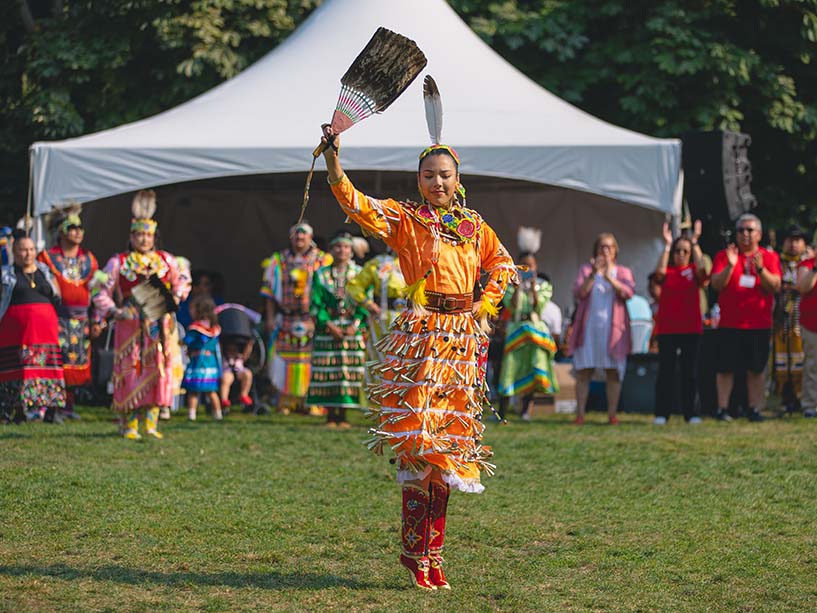
Madison Noon is Nehiyaw Iskwew (Cree woman) from the Thunderchild Cree First Nation in Saskatchewan and was one of the Adult Head Dancers at TMU’s annual Pow Wow. An honour dance — in which Noon completed a single round of the Pow Wow circle before other jingle dress dancers joined her — celebrated her achievements as the first Nehiyaw Iskwew to complete TMU’s four-year dance program, where she received a bachelor of fine arts in dance and performing arts. Noon was recently accepted into the Toronto Raptors’ North Side Crew. All photographs by Nadya Kwandibens.
On Friday, September 13, 2024, Indigenous and non-Indigenous community members came together in celebration at TMU’s 2024 Pwaaganigaawin (Pow Wow). This year’s theme was “Honouring all our relations,” reminding attendees of the interconnectedness of all beings (human and non-human, physical and spiritual) to be respectful and mindful of our relationship with ourselves and with others, and to consider the impact of our actions on generations to come. The Pow Wow also raised awareness of the ongoing work needed to advance reconciliation with Indigenous Peoples in Canada.
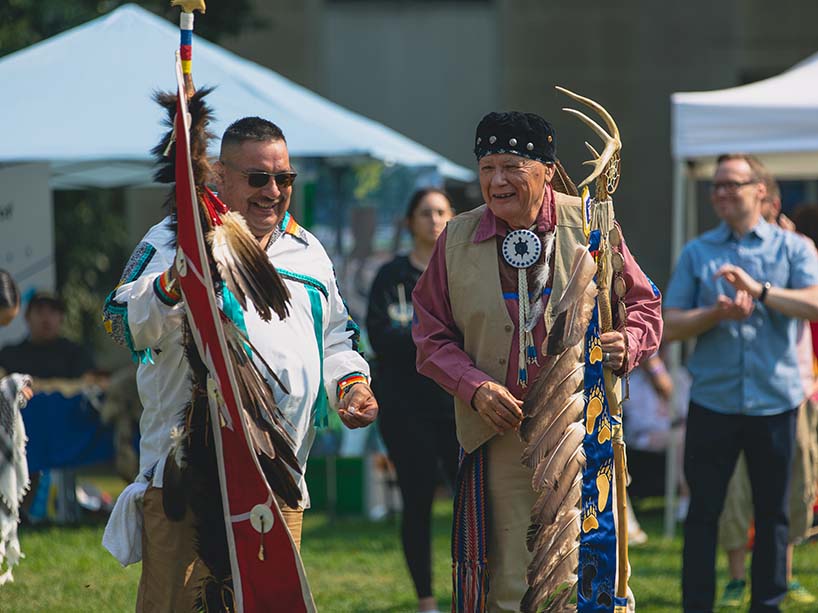
TMU Pow Wow commences with dancers led in by eagle staff carriers. The eagle staff represents and honours Indigenous veterans. Thohahoken Michael Doxtator, professor and head, Saagajiwe Indigenous Program at The Creative School, who is Mohawk from the Six Nations of the Grand River (right), carries in the Indigenous Student Services Eagle Staff, and Ontario Regional Chief Abram Benedict carries the Chiefs of Ontario eagle staff.
Before the Grand Entry, Master of Ceremonies, Bob Goulais, M'zhaakwat, migizi n'dodemun (eagle clan), of Nbisiing Anishinaabeg (Nipissing) First Nation, provided welcoming remarks, discussed the history of Pow Wow, and invited all attendees to join the for-fun and intertribal dances. He noted that Pow Wows are historic gatherings of many nations, where all are welcome.
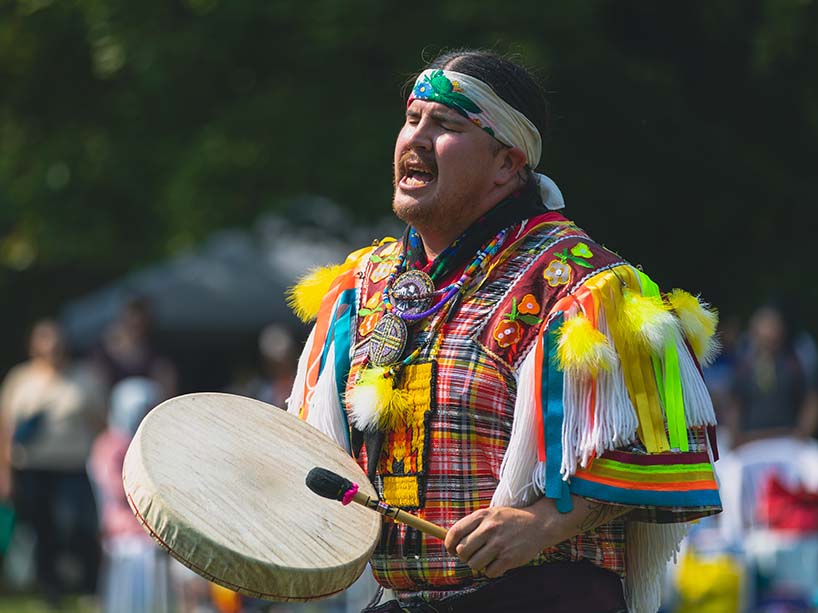
Drum groups included the White Fish Juniors (host drum), 416 Singers (co-host drum), other invited drums All Nation Jrs (Toronto area), Young Tribe (Six Nations). The beat of the drum represents the heartbeat of individuals and the community while providing rhythm for songs and dances. At intertribal gatherings like the Pow Wow, songs traditionally had no words, only vocalization, to bridge the language barriers between nations while creating and celebrating community. The drum’s beat and the songs that accompany it — sung by individuals or groups — continue this tradition today. Drums are traditionally made with natural materials such as cedar and deer hide, which are tied together with sinew. Photographed: Lorne Pawis, Wasauksing First Nation.
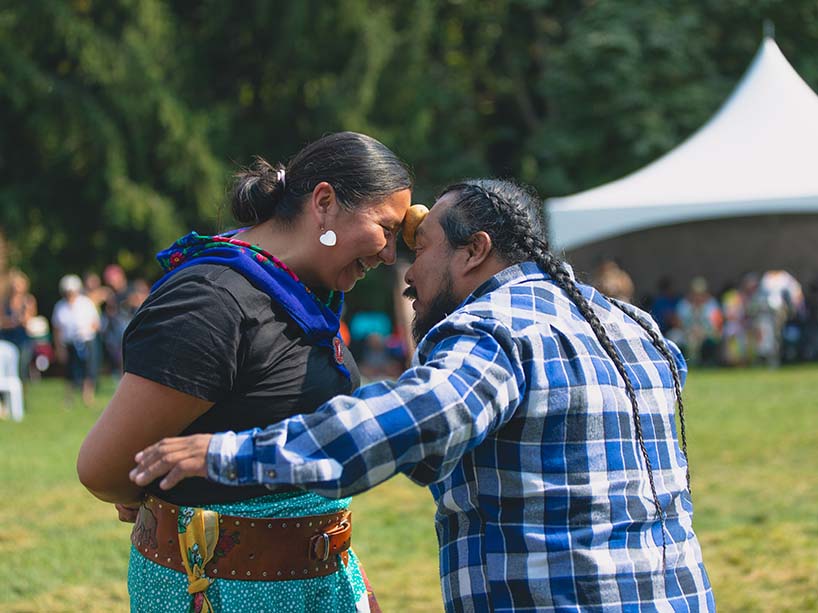
Many couples joined in the Potato Dance at this year’s Pow Wow. Couples held a potato between their foreheads as they danced and followed increasingly challenging directions from MC Bob Goulais. Photographed are this year’s winners, Ronal and Cassandra, who attended the Pow Wow with their young family. The Potato Dance was one of many specials at the gathering, which also included the Longest Hair Contest and Ribbon Skirt Contest.
Key moments during the 2024 Pow Wow included the jingle dress dance special led by professional dancer and choreographer Madison Noon; specials and inter-tribal dances were open to all Pow Wow attendees, such as the Potato Dance and sweetheart special; and a Chicken versus Grass dance-off hosted by Kirby Buffalo, a Plains Cree Chicken Dancer from Treaty-6 Territory in Alberta.
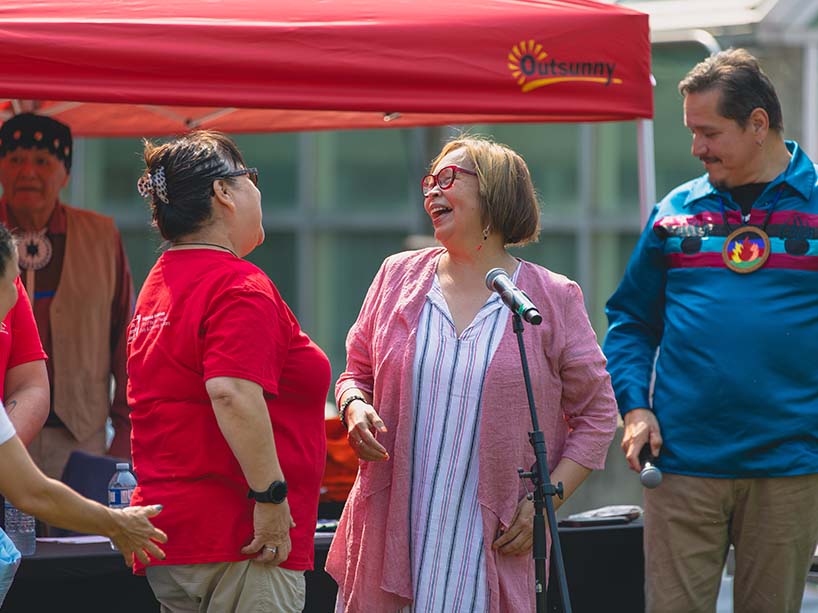
With Pow Wow MC Bob Goulais on her left, Monica Mckay, director of Indigenous Initiatives, OVPECI, laughs with Sheila Saikkonen, administrative assistant of Gdoo-maawnjidimi Mompii Indigenous Student Services. During her address to Pow Wow attendees, Mckay expressed gratitude for the individual and community work that went into this year’s event and reminded all attendees that community strength is embodied in kinship models, and at gatherings like the Pow Wow, there is a place for every person.
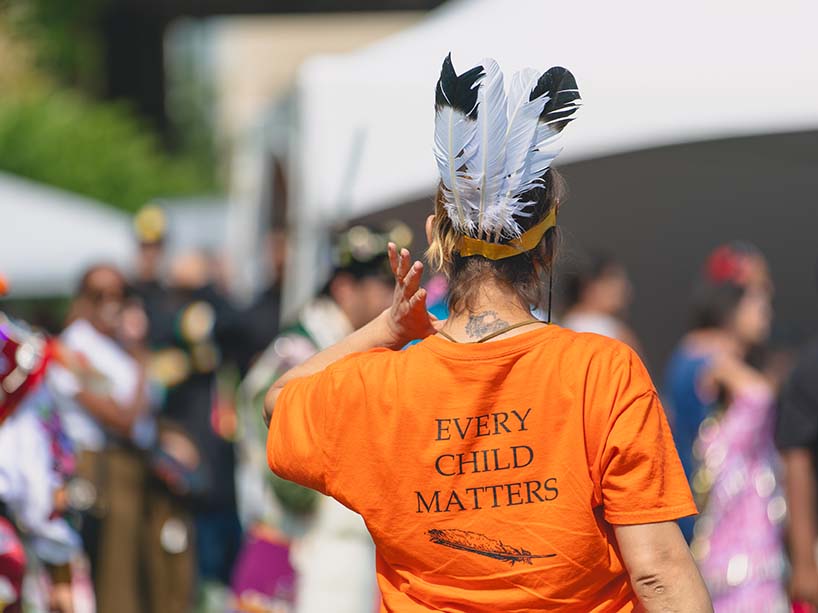
Many Pow Wow attendees wore orange shirts with the words, “Every child matters.” Throughout September and on the National Day for Truth and Reconciliation and Orange Shirt Day, which both occur on Sept. 30, orange shirts are worn to honour Canada’s residential school survivors and their families as well as recognize their experiences. Orange shirts show solidarity with the Indigenous community and are an important reminder of Canada’s ongoing and much-needed work towards reconciliation.
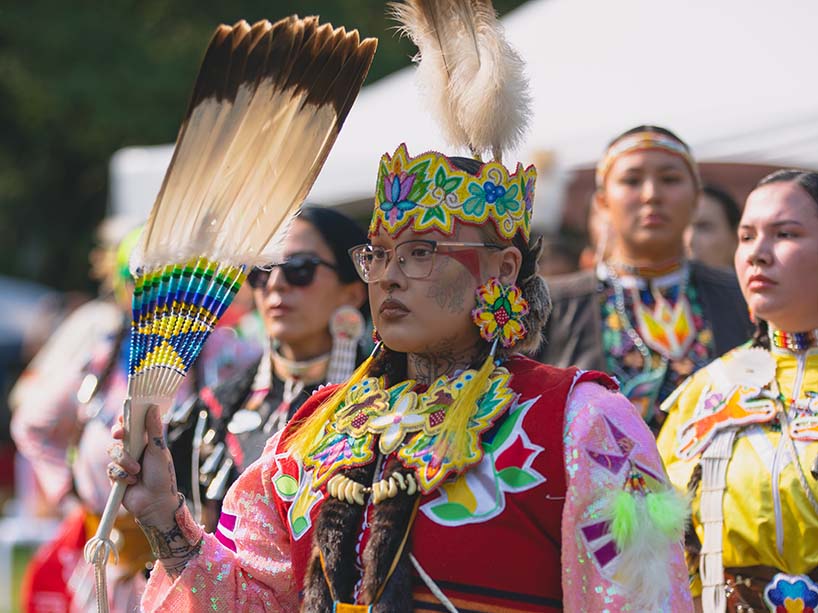
Pow Wow dancers may wear eagle feathers in their hair and carry an eagle fan. Along with the traditional dance, other dances include the fancy dance, with dancers recognized by their long fringed shawls and energetic movements, and the jingle dress dance, in which dancers’ regalia is adorned with small tin cones. During the jingle dance, dancers tread softly, dancing in prayer and offering thanks to the earth that holds us. The jingle dress dance is part of healing, and carries great healing energy. Photographed: Aj Douglas of Six Nations.
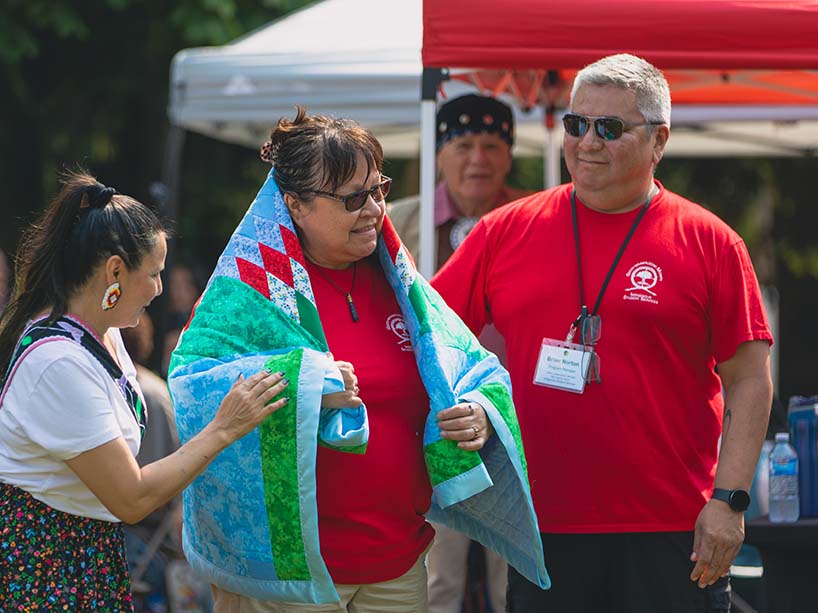
Sheila Saikkonen, who is Ojibway from the Atikameksheng Anishnawbek (Whitefish Lake) First Nation near Sudbury, Ont., was gifted with a blanket in celebration and commemoration of 20 years of work within TMU’s community. Saikkonen is the administrative assistant of Gdoo-maawnjidimi Mompii Indigenous Student Services and the first point of contact for many Indigenous students and community members looking for direction at the university. Also photographed are Brian Norton, program manager of Indigenous Student Services (right) and Cher Trudeau, administrative coordinator, Indigenous Education Council (IEC) and Indigenous Initiatives, OVPECI (left).
Other members of the TMU community were commemorated for their years of service at the university, including Monica Mckay, director of Indigenous Initiatives, Office of the Vice-President, Equity and Community Inclusion (OVPECI). Mckay started her career at TMU when she created TMU Gdoo-maawnjidimi Mompii, Indigenous Student Services (as a student) and the Indigenous Student Centre, which celebrated its 30th anniversary on Sept. 25, 2024.
In a heartfelt address to Pow Wow attendees, Tanya (Toni) De Mello, vice-president, equity and community inclusion (OVPECI), reminded us that Indigenous teachings and worldviews are a vital part of TMU. Therefore, the Pow Wow is not only a celebration but also a time for learning — or, put another way, a time to consider what must be unlearned for non-Indigenous persons to foster meaningful and reciprocal relationships with Indigenous peoples and advance reconciliation in Canada.
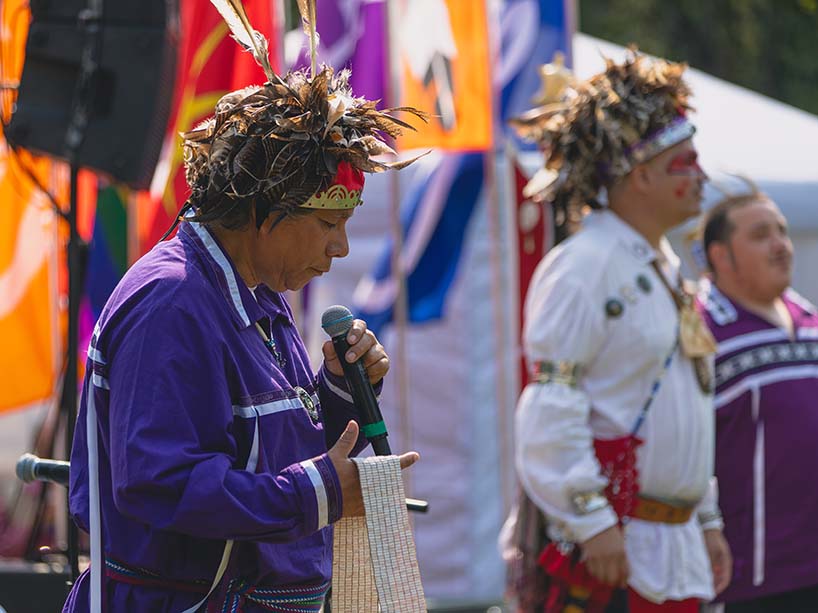
Frank McNaughton from the Six Nations of the Grand River took some time at the Pow Wow to share the Dish With One Spoon Wampum, which symbolizes the relationship between the Anishinaabek, Haudenosaunee and Mississauga, acting as an agreement and reminder to share the land so that all who live within it can benefit equally. After sharing this teaching, McNaughtonn went on to discuss the significance of different Haudenosaunee dances and invited other nations to join them in their counter-clockwise dances around the Pow Wow circle.
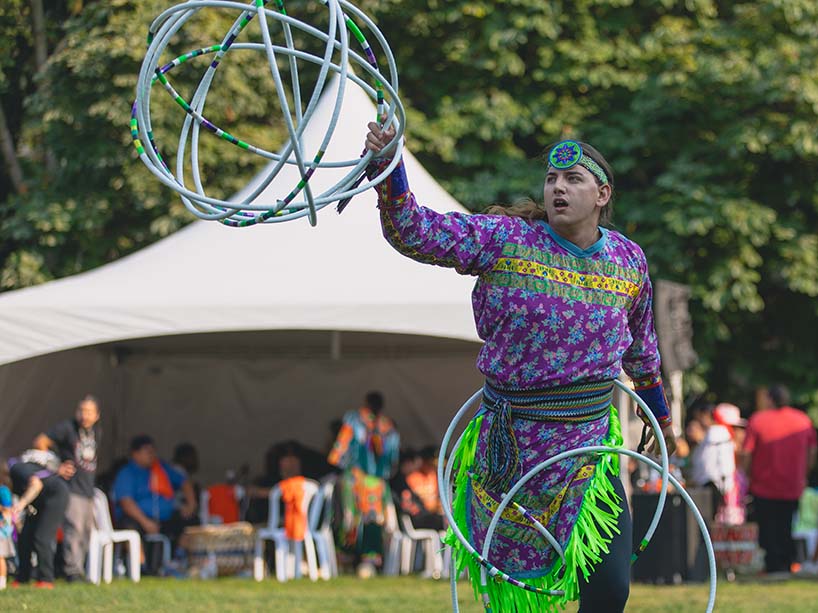
River Christie-White, Oneida Nation of the Thames, a fourth-year student at TMU in the Professional Music program, wowed audiences with their hoop dance, which involves creating different moving and static shapes from many hoops. Every Pow Wow dance holds meaning and cultural significance. Much like the Pow Wow circle itself, the hoops in this dance represent the never-ending circle of life in which all beings have a place, serving as a reminder of the theme of this year’s Pow Wow, “Honouring all our relations.”
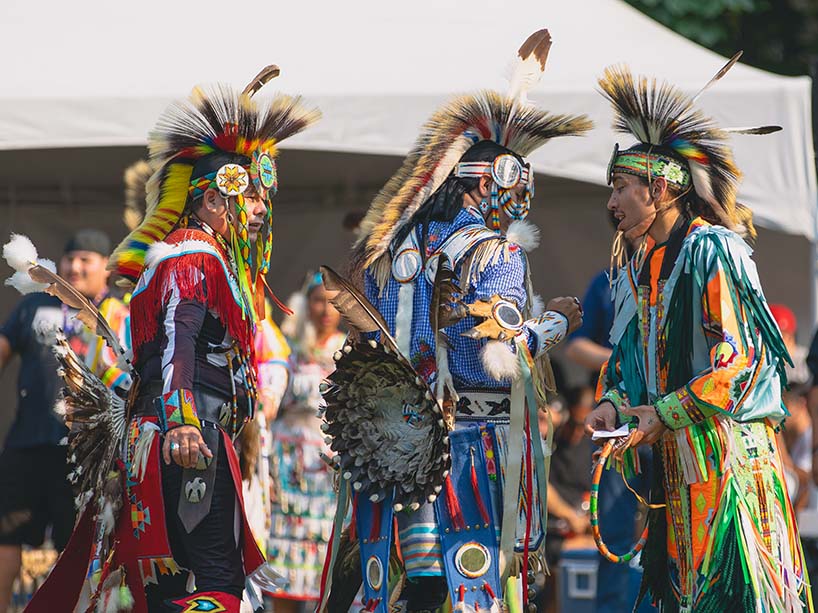
As the September shadows began lengthening towards the end of the day, dancers competed in a grass versus chicken dance-off hosted by the Buffalo family. Pow Wow MC Bob Goulais explained how grass dancers bless and flatten the grass with their movements, making the ground soft for the dancers that follow. Grass dancers' regalia is colourful and heavily fringed, mimicking the sway of grass. The chicken dance, named after the wild chickens of the prairies and their proud movements, involves quick steps and jumps, and the dancers’ regalia is colourful, adorned with many feathers and a bustle on their backs.
The histories, traditions, cultures and strength of Indigenous Peoples were truly honoured at this year's Pow Wow. The sense of community celebration between all attendees reminded us that, no matter where we come from, we share a connection and duty to be mindful and respectful towards ourselves, each other and all beings that inhabit this earth.
Chi miigwetch / Nia:wen / Maarsii / Thank you to all attendees and community members who made this year’s 2024 Pow Wow so successful.
In a vibrant celebration, members of the TMU community and the public were given the opportunity to learn about the varied traditions and worldviews among Indigenous communities across Turtle Island through an engaging array of songs, dances and teachings.
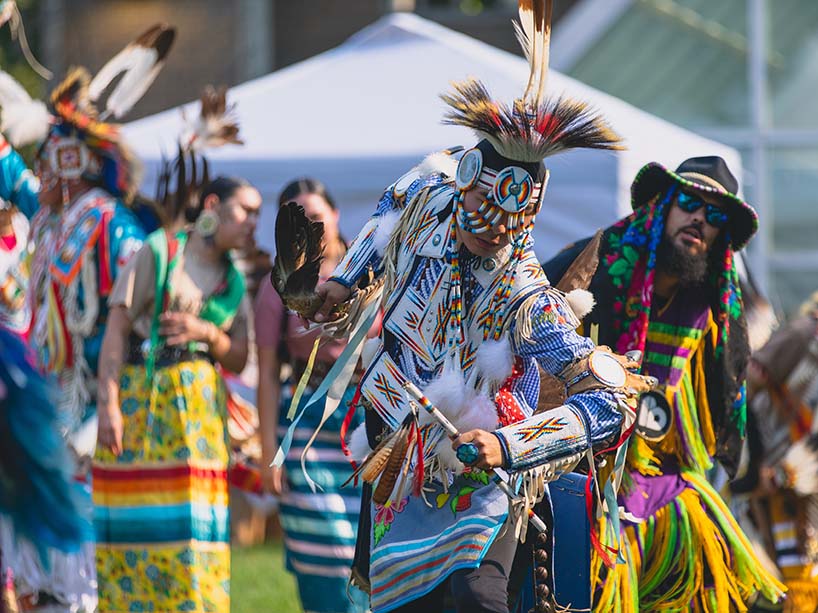
Dancers of all ages, genders and nations from across Turtle Island attended TMU’s 2024 Pow Wow and demonstrated a wealth of skills and dance styles during the Grand Entry and subsequent dances. The program included traditional, jingle dress, fancy dances, the Two Spirit dance and grass and chicken dances. Photographed in his white regalia is Kirby Buffalo, a Plains Cree Chicken Dancer from Alberta-Treaty 6 Territory, who was the Adult Head Dancer.
